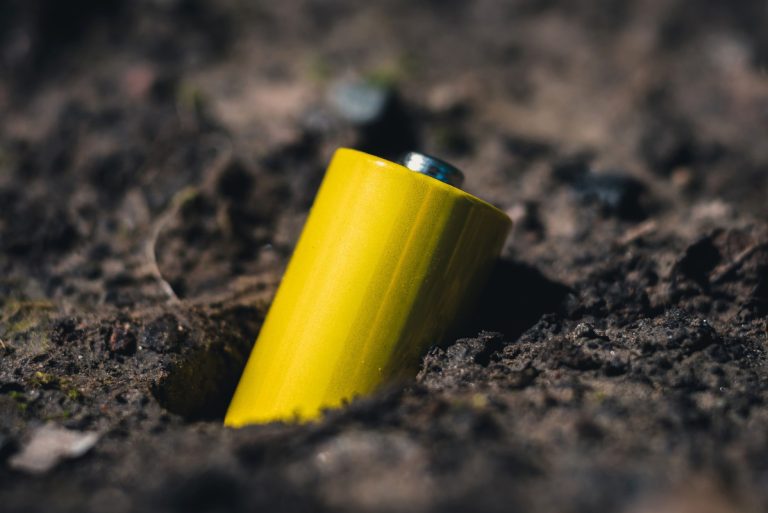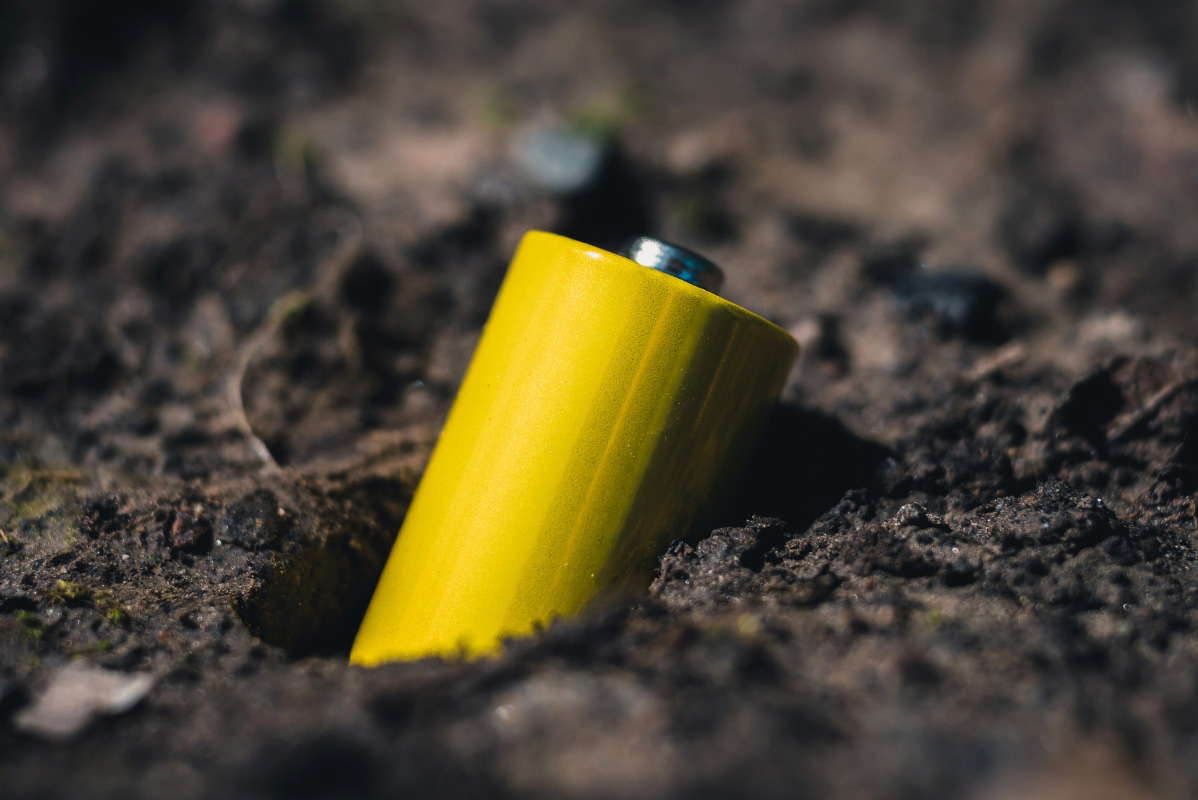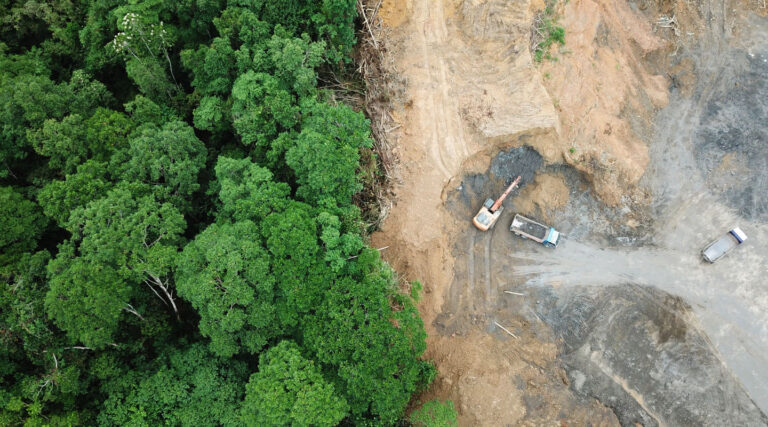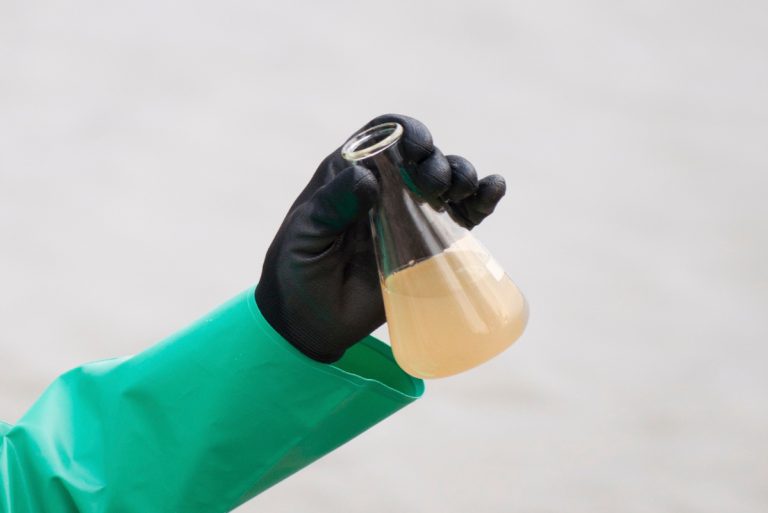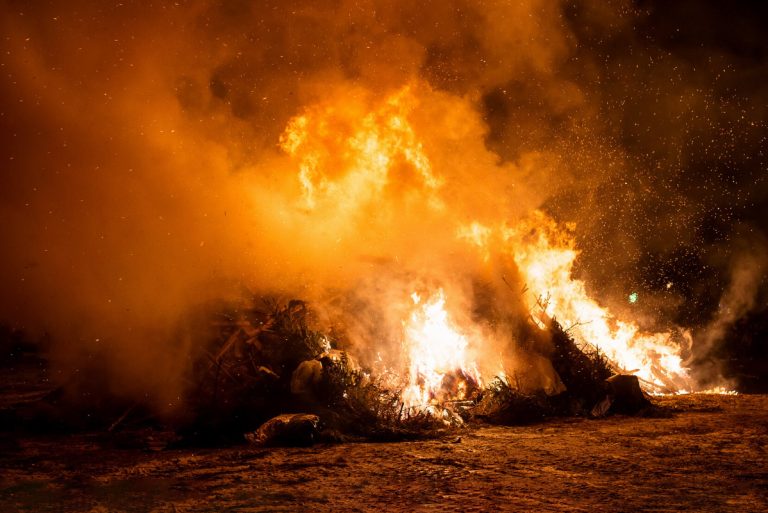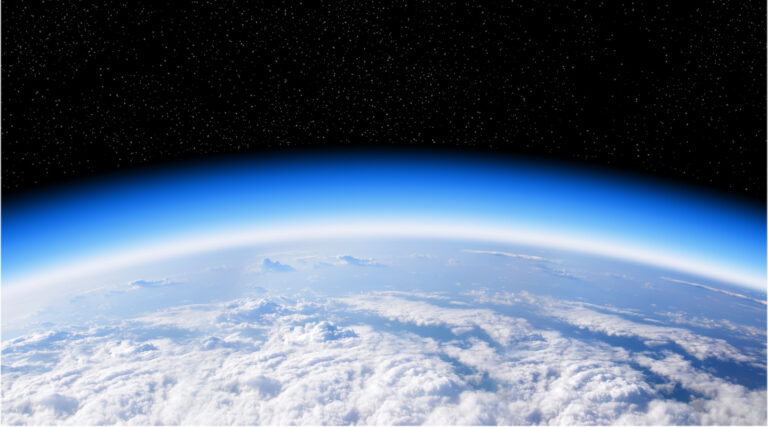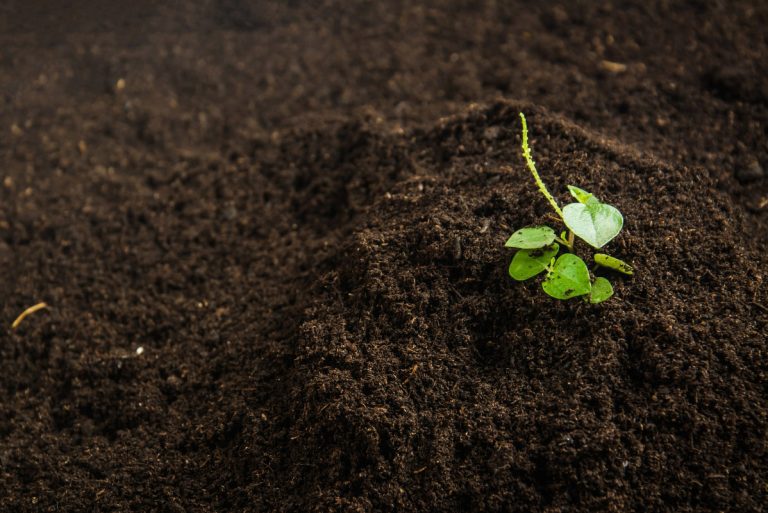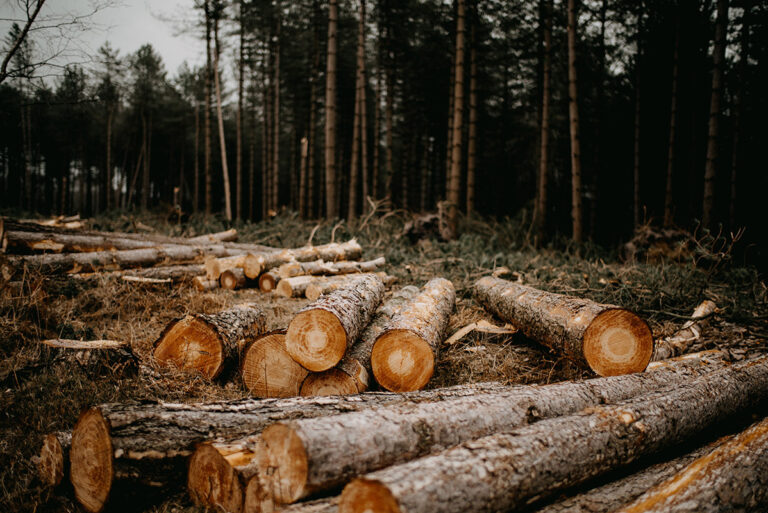Soil contamination is a widespread problem that affects many parts of the world, including much of the USA. It can be devastating for humans, natural ecosystems, and the environment in general. So, what is soil pollution, what causes it, and why is it such a concern?
What is soil pollution?
Soil pollution occurs when the ground is contaminated with toxic pollutants such as chemicals and heavy metals. It is officially classified as pollution when these contaminants are found in high enough concentrations, posing a risk to plants, animals, or human health.
This term can also be applied to contaminants that occur naturally in the soil if they exceed normal levels, even if this is not enough to pose a risk to humans or the ecosystem.
The soil environment is incredibly complex, being made up of a diverse range of compounds and subject to a range of natural processes. Soils may be home to all kinds of microbes and impacted by rain, wind, and groundwater, which can seep up from below.
All soil contains a range of compounds, including a range of organic material, such as proteins, hydrocarbons, lipids, fatty acids, and DNA. Soils also naturally contain various inorganic particles, including metals, ions and salts (such as phosphates, sulfates, and nitrates).
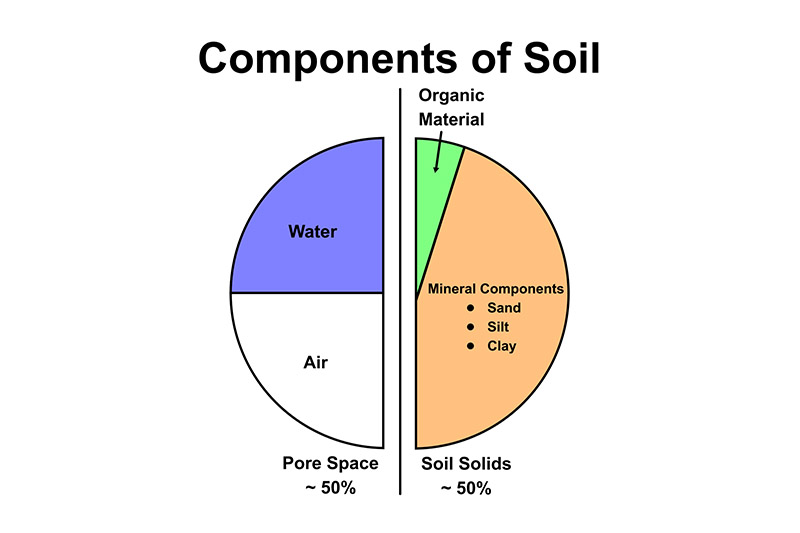
In scientific terms, all of the above compounds are called contaminants, even if they occur naturally in the soil. Therefore, just because soil contains contaminants, this isn’t naturally an issue, nor does it mean that this has occurred due to human intervention or environmental problems.
However, soil pollution occurs when:
- The contaminants could harm humans and/or the ecosystem
- The number of pollutants present is above the level that naturally occurs in the soil
What causes soil pollution?
In nature, contaminants mostly make their way into the soil through the microbiological processes of soil microorganisms, plus plant and animal material breaking down and getting mixed into the soil. The soil can also absorb particles from the atmosphere, whether from rainfall, wind, or through absorption of shallow groundwater.
Natural processes can alter the levels of organic and inorganic materials in the ground, causing pollution. However, human activities have greatly increased the types and amounts of contaminants that get into the soil, both directly and indirectly.
Natural causes
It’s common for natural processes to change the types of materials found in the soil or their quantities. It’s much less common for natural processes to lead to toxic chemicals accumulating in the soil, but this has happened in a few recorded cases.
However, typically, natural causes will impact the soil in ways that do not pose a risk to people or the environment, such as:
- The soil absorbs elements from the air through a process called atmospheric deposition, but they are not washed away because there’s not enough rain, causing compounds to accumulate naturally.
- Compounds are naturally produced in the soil through specific environmental conditions.
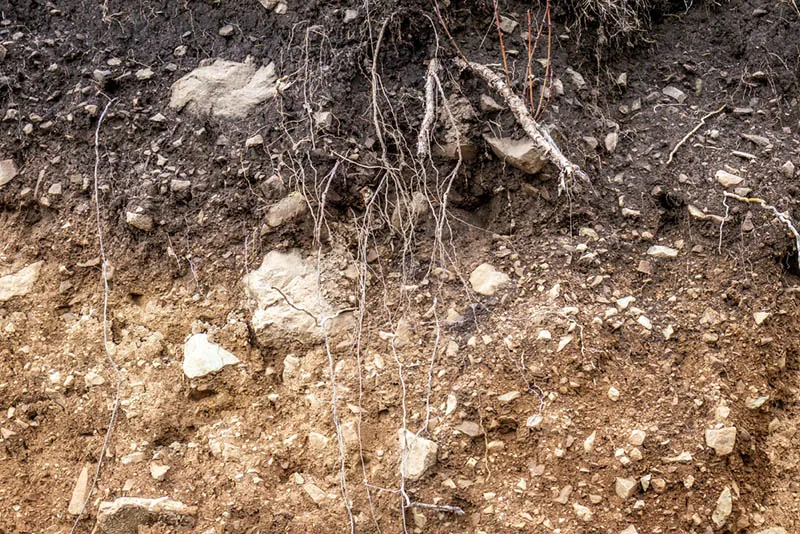
For example, if there is a source of chlorine plus a metal present in the soil, this could be converted into perchlorate, a compound used in fireworks, via a natural chemical reaction. For this to happen, there would also need to be an energy source, such as a lightning strike.
Furthermore, once the soil is polluted through human causes, natural conditions and contaminants present may interact with these particles, resulting in further changes. These processes may reduce the toxicity or contamination level, or it may make things worse.
An example of this could be a leak from sewer lines, causing chlorine to enter the subsurface. The chlorine could interact with elements in the ground, generating chloroform or other trihalomethanes.
Human causes
Anthropogenic (human) causes are overwhelmingly to blame for ground and soil pollution issues. In some cases, this can happen accidentally, or it may be a more deliberate action when industry or agriculture dumps harmful substances into the soil.
Agriculture
Agricultural activities are one of the primary causes of soil pollution. Conventional agriculture involves the heavy use of chemical pesticides and fertilizers, which diffuse into the soil.
Over-grazing of livestock also causes soil erosion, changing the soil composition and making it less fertile. Using heavy machinery can have a similar effect by compacting the soil.
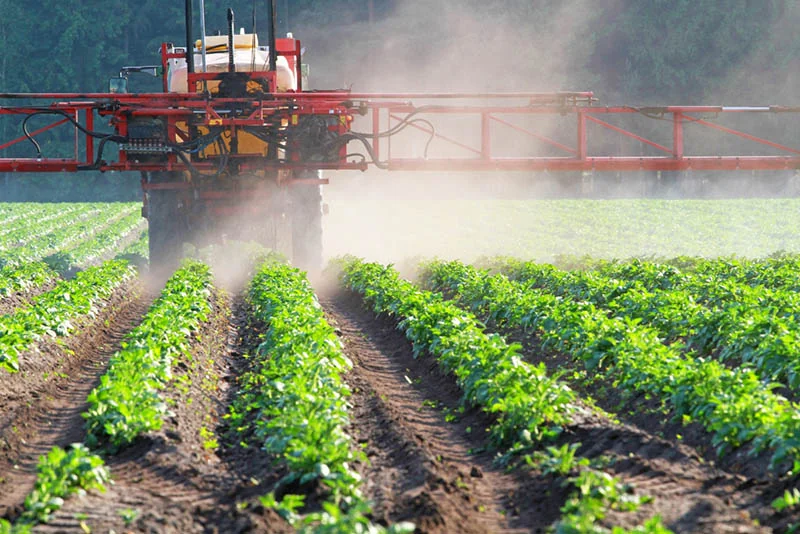
Mining
The mining industry is another big culprit. When mines crush or process materials, especially heavy metals, this can emit toxic particles that contaminate the soil.
Additionally, various mining processes pollute surface and groundwater with a range of toxic chemicals, which then leech into the soil. Furthermore, mining activities can disturb the soil in a range of other ways, causing damage, erosion, and releasing contaminants into the earth.
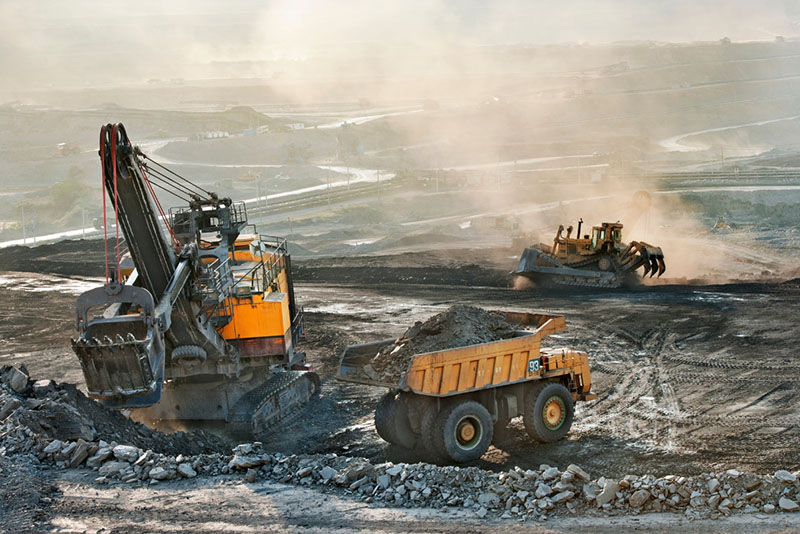
Manufacture and industry
Various manufacturing and industrial activities can lead to soil pollution. Factories and foundries with furnaces disperse contaminants into the air, which are then absorbed into the soil directly or through rainfall.
Equally, all vehicles powered by fossil fuels release pollutants into the air, many of which end up in the soil.
Construction and housing
Construction is another major cause of soil pollution, especially in urban areas. Construction sites contain a range of chemicals that can pollute the soil, the most problematic being those that travel in the air as fine particles, such as PAHs, high levels of which can cause irritation to the eyes and respiratory system, or blood and liver issues, according to the CDC.
Another material of great concern is asbestos, a toxic and highly hazardous material found in many buildings built before 1989. If not handled correctly, fine particles of asbestos may be released into the atmosphere during the demolition or renovation of older buildings, where it is easily dispersed by wind.
Even when completed, buildings can still cause soil pollution. For example, as the paint on the outside of our homes and other structures weathers over time, it flakes off and ends up in the soil.
Lead-based paint can be particularly damaging to the soil, but almost all paints contain chemicals that result in soil pollution.
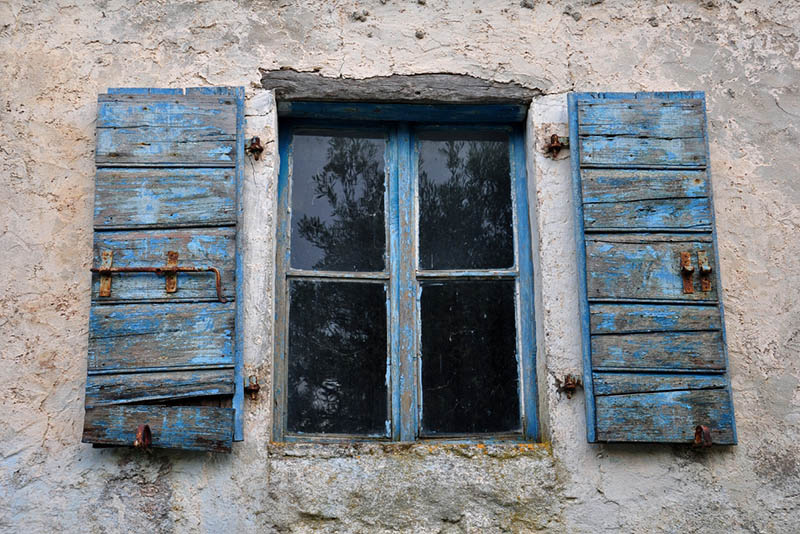
Septic systems for houses and other buildings can also be an issue. If septic tanks are not well-constructed or not maintained properly, they can leak various harmful and potentially dangerous materials into the ground, including chemicals, bacteria, and viruses.
Chemical waste and landfills
Chemical waste dumping is another big problem. This may be accidental or deliberate, such as in the case of illegal dumping, but either way, it introduces toxic chemicals to the soil environment.
It’s not just chemical dumping that is an issue: the regular household waste that we send to landfill releases pollutants as it breaks down, and these contaminants then leak into groundwater or disperse into the air, eventually contaminating the soil. If the waste contains chemicals, metals, and other toxins, these will also be released into the environment as it decomposes.
Not to mention the other types of pollution released as trash breaks down in landfill, such as the potent greenhouse gas methane.
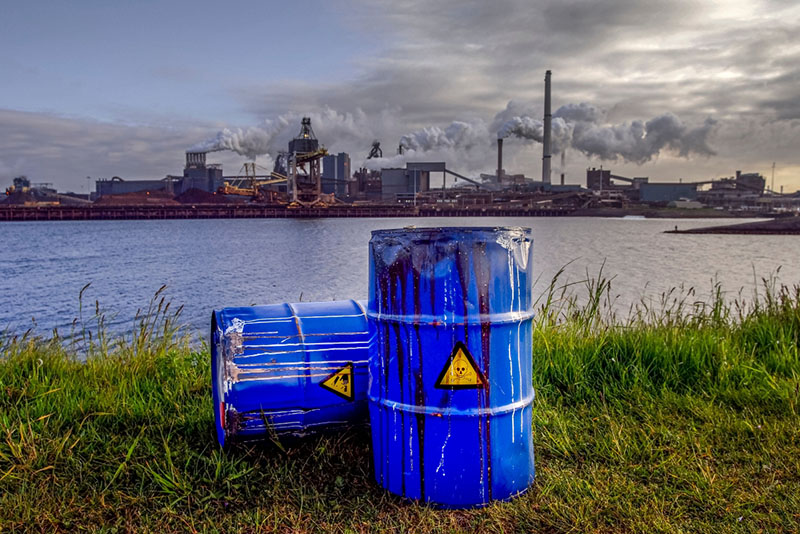
This is just one of the reasons why it’s so critical to responsibly dispose of items such as LED light bulbs, propane tanks, and cooking oil, as well as limit the amount of waste we use through recycling and buying zero-waste products.
Accidents and spills
Accidental spills and leaks are another major cause of soil pollution. Whenever chemicals and other materials are transported or stored, there is a risk that small or large quantities may leak out. These chemicals may spill directly onto or into the soil, or they may be washed there by rain, carried by a river, or otherwise be absorbed into the soil later on.
Dramatic examples include a truck carrying chemicals overturning on the highway, or an oil tanker leaking petroleum into the ocean, such as the massive BP spill in 2010, when 4 million barrels of oil leaked from a damaged oil tanker into the Gulf of Mexico.
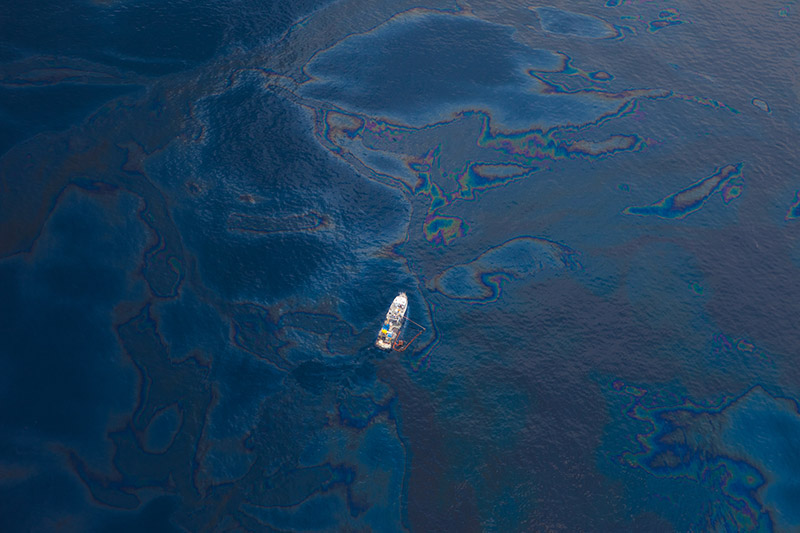
Source: Wikimedia / kris krüg
The immediate impacts of an oil spill in the sea are devastating to local marine ecosystems. However, the oil contamination can then spread to waterways such as rivers, eventually polluting the soil over a wide area.
However, there are more simple spills as part of our daily use of chemicals that ultimately contaminate the soil. For example, if you spill a bit of gas when filling your car at the gas station, this will eventually be washed into the soil.
Even storing chemicals, oil, and other hazardous materials carries a risk of contamination. There are literally millions of storage tanks in the US alone that are buried underground for long-term storage.
Over the years, these tanks may crack or degrade, and their contents can leak out into the soil. Given there are an estimated 20,000 abandoned or uncontrolled hazardous waste sites in the US, there is a real risk of improperly-maintained storage units leaking toxic materials into the soil.
This could yet include radioactive materials, as currently, there is no permanent solution for nuclear waste storage in the USA.
Why is soil pollution a problem?
Soil pollution takes many forms and can have a range of causes. Equally, it can have a large number of impacts, big and small, short and long term, on people, wildlife, and the broader natural environment.
Impacts on ecosystems
Soil is literally the foundation of land-based ecosystems, so its pollution can have severe implications for all forms of life. When soil is contaminated, it may not be able to support plants as well as previously, causing poor plant health and damaging vegetation growth.
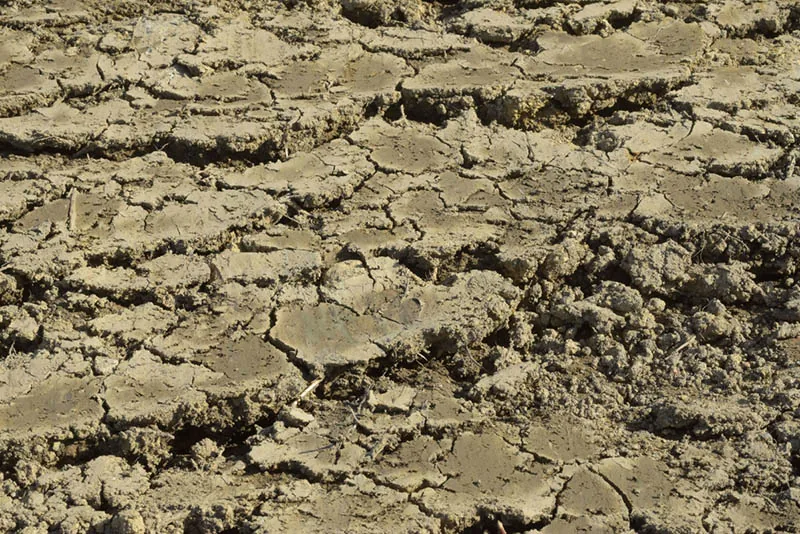
Severely contaminated soil may be unsuitable plant life at all. This transfers further up the food chain, as animals, birds, and insects lose not only their food source, but also the habitat where they live, causing species displacement and threatening extinction.
Furthermore, when wildlife consumes vegetation grown in polluted soil, it can cause a range of health issues and may even be fatal.
Soil contamination also severely impacts creatures we can’t see: the microorganisms that call this environment home. Toxins can inhibit the growth of microbes, make it harder for them to perform their functions which are an essential part of the ecosystem, or kill them entirely.
Groundwater contamination
Groundwater contamination is another major issue that is closely related to soil pollution. This relationship flows both ways: just as groundwater pollution can contaminate the soil, contaminated soil can pollute groundwater reserves.
Maintaining clean groundwater is essential for a number of reasons. Not only do 50% of all people in the US depend on it for drinking water, but it’s also a vital source of water for irrigation, as well as feeding lakes and rivers, thus supporting a range of natural ecosystems.
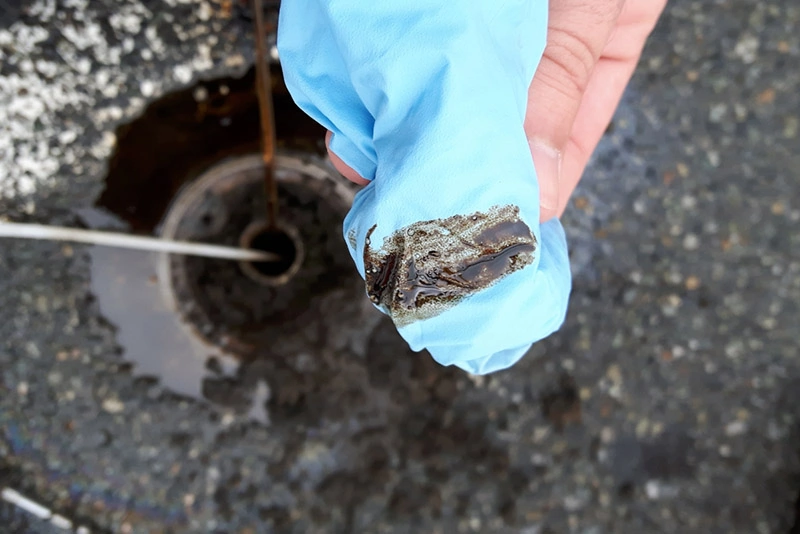
Contaminants in the soil, whether fertilizers, chemical or oil spills, toxins released through mining, or leachate from decomposing landfill, can filter down through the ground and make their way to the groundwater.
Contaminated groundwater can lead to a range of negative effects, including:
- Human health implications: Drinking contaminated water can have serious health effects, including dysentery, hepatitis, toxic poisoning, and cancer.
- Impacts on wildlife: Plants and animals at all levels of the ecosystem depend on groundwater directly or indirectly. Polluted groundwater can be harmful, and even fatal, to all forms of life.
Deforestation and soil erosion
Over-grazing, plus using chemical fertilizers, pesticides, and heavy machinery in conventional agriculture, can cause soil pollution and degradation. Over time, these impacts decrease crop yields and quality, meaning farmers need to clear more land to plant new crops.
This not only expands the range of the soil pollution over the long term, but it can also lead to deforestation, as woodlands and other natural environments are cleared to plant more crops.
In turn, this can lead to habitat destruction, species extinction, and water scarcity, as well as contribute to climate change.
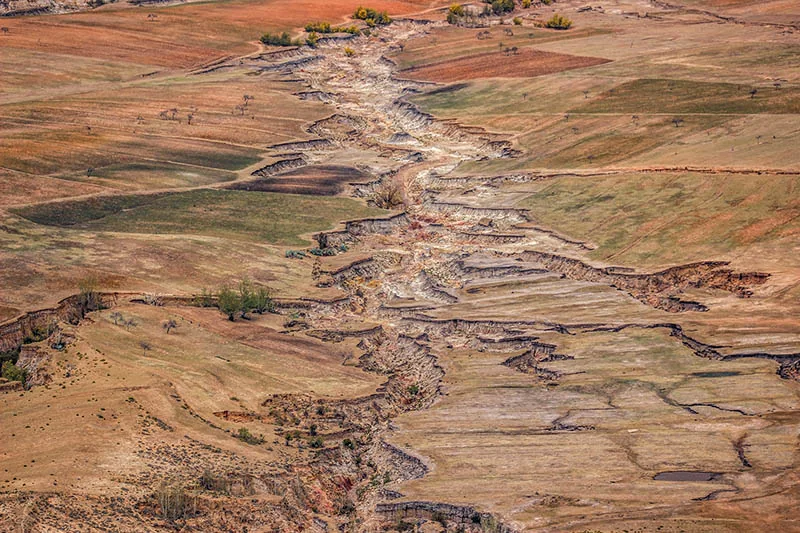
Source: Wikimedia / Lschefa
Additionally, as contaminated soil becomes less able to support plant life, it’s no longer held in place by plant roots, and can easily blow or wash away, a process that’s known as erosion. Soil erosion is a major issue, with impacts ranging from desertification to economic losses in the agricultural sector.
Soil erosion can even contribute to deadly “natural” disasters. For example, in 2020, Indonesia experienced deadly floods when eroded sediments clogged Jakarta’s rivers and canals.
Health, economic and societal impacts
When people are exposed to contaminated soil it can cause a range of health impacts. Toxic particles in the soil can also become airborne, leading to respiratory issues such as bronchitis and asthma when people inhale them.
Additionally, fruit and vegetables grown in polluted soil or with contaminated groundwater can take up these toxins, which we then ingest when we eat these foods.
The exact impacts depend on the type of contaminant, but short-term symptoms can include skin irritation, headaches, fatigue, nausea, diarrhea, and vomiting. Long-term exposure to toxins through contaminated food can lead to severe, even fatal, health problems such as cancer, nervous system issues, and kidney and liver damage.
Ultimately, if we pollute the ground so much that we can’t use it for farming anymore, this will limit our ability to grow food. This also extends to the other crops we rely on for various uses, such as cotton for textiles and biofuels like corn and sugarbeet.
This has obvious implications for global hunger, which is already a significant concern. According to the WHO, up to 828 million people were affected by hunger in 2021, 150 million more than in 2019.
Soil pollution could also have devastating impacts to the US and global economies over the long term, as the agricultural and forestry industries become less productive, make less revenue, and offer fewer jobs.
What can we do to help prevent soil pollution?
Thankfully, there are plenty of things we can do to avoid soil pollution and mitigate the impacts of ground that is already contaminated. Effective action on soil contamination and land management needs to involve individuals, communities, companies, and governments, with all of these groups working together to protect the environment.
At a government level, authorities need to introduce tougher legislation to prevent soil pollution, closely monitor agriculture, mining, and industry to ensure compliance, and apply harsh penalties for those who fail to do so. Other measures could include funding research and development, adopting waste-to-energy practices, and implementing soil remediation projects.
As an individual, you can play your part in soil pollution prevention by:
- Going organic and opting to buy organic food, clothing, and beauty products, and even growing your own herbs and veggies.
- Reducing the amount of waste you produce by buying zero-waste products, recycling, composting, and disposing of hazardous items responsibly.
- Avoiding chemical cleaners, cosmetics, personal care products, and air fresheners, and switching to natural alternatives.
- Educating others about soil pollution, why it’s important, and what they can do to prevent it.
- Lobbying your representatives such as calling or emailing your local congressperson and asking them to introduce legislation to prevent soil contamination.
- Joining campaigns for better land management practices and environmental conservation.
Final thoughts on soil pollution
Soil pollution can be devastating to people and the environment in various ways, from causing health issues in people and animals and threatening food production to long-term eco disasters such as habitat destruction, deforestation, groundwater contamination, and climate change.
Soil contamination is caused by a range of factors, some natural, but the causes of the most severe forms of pollution are almost entirely linked to human activity. As the causes of this problem are diverse, it demands a range of solutions at the individual, company, and political level.
By now, you’ve hopefully got the full answer to the question ‘what is soil pollution’, and if we’ve done our job right – you’ll now be interested to know more about how to prevent it; so check out this post, to see what you can do to help.
